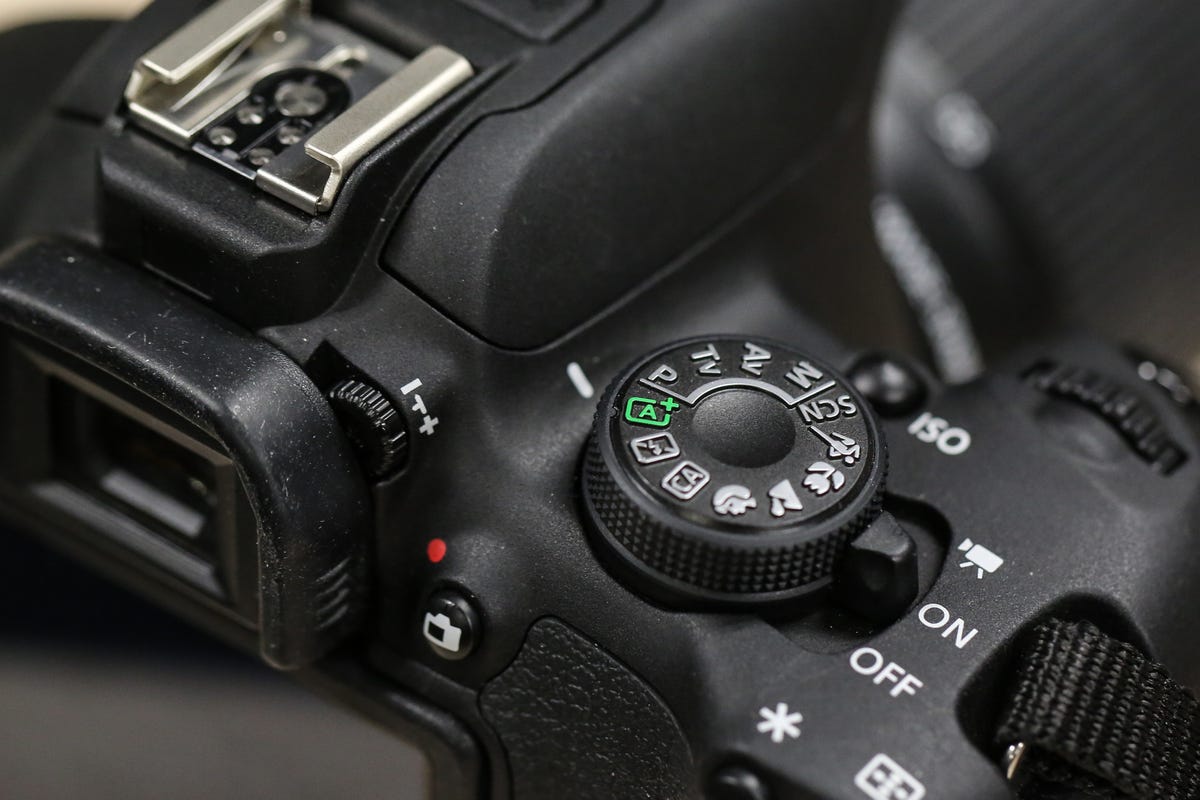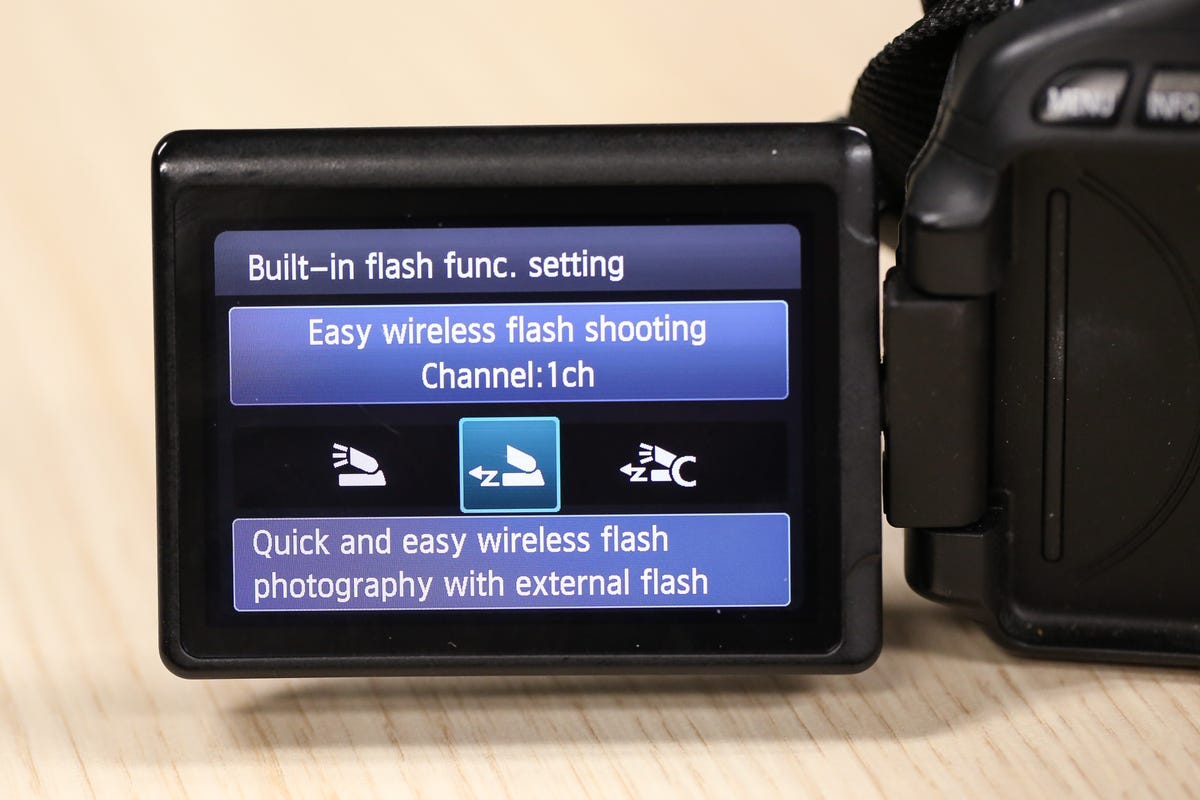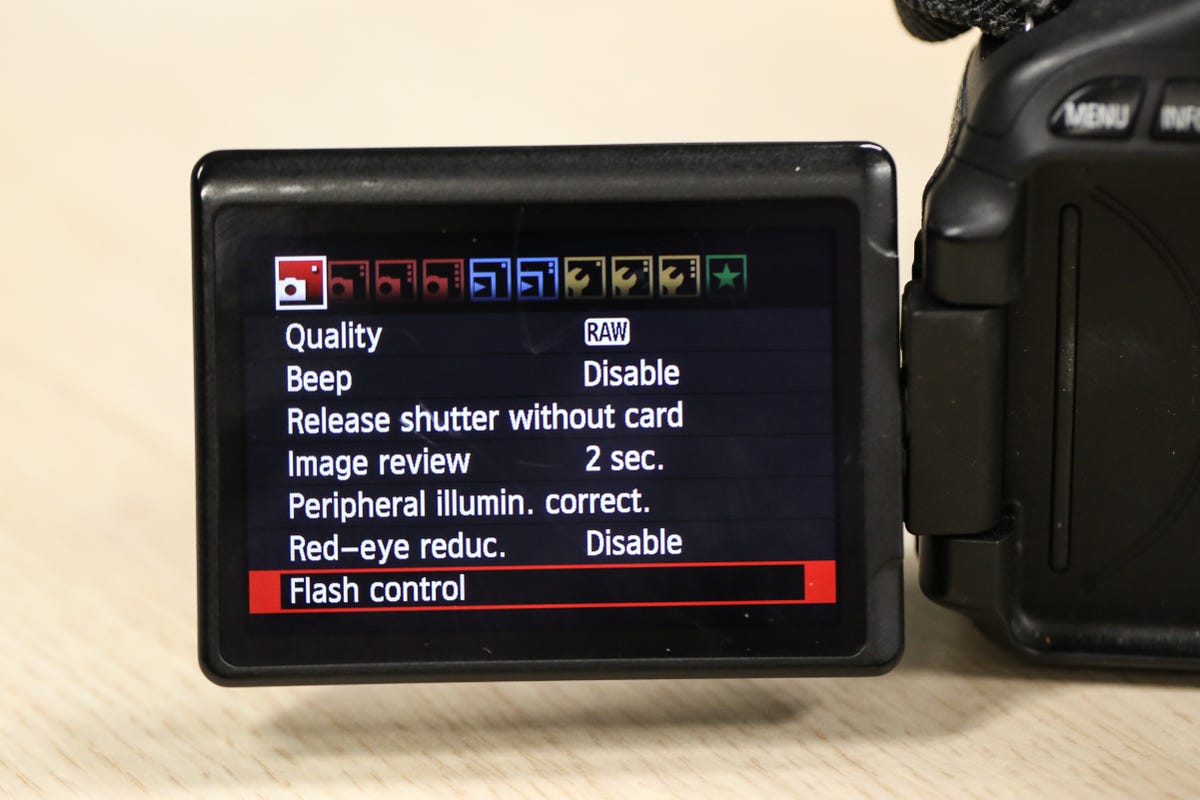

Now playing:
Watch this:
Beginner’s guide to Canon wireless flash
2:08

Lexy Savvides/CNET
Want to play with off-camera lighting but don’t know where to start or what you need? Canon’s wireless flash system makes it easy.
Here is how you can use your dSLR to trigger an off-camera flash in a few simple steps.
Nikon users can click here for a separate tutorial covering the same steps.
What you need
- Canon dSLR with wireless flash control built-in. Models include 7D Mark II, 70/60D, 700D/T5i, 650D/T4i and 600D/T3i
- A compatible speedlite that can be set to slave. Models include 270 EX II, 320 EX, 430 EX I and II, 580 EX I and II, 600 EX
- A second speedlite (not essential if you only want to use one light)
Easy wireless setup
Step one: Turn on your dSLR and choose one of the manual exposure modes (PASM).


Lexy Savvides/CNET
Press the Q button on the back of the camera to flick through the selections on the screen and scroll until you find the flash icon.


Lexy Savvides/CNET
Select this by pressing the Set button. There should be three options to choose from: normal flash firing, easy wireless flash and custom wireless flash. Choose easy wireless flash.


Lexy Savvides/CNET
If you can’t find the icon on the screen using the Q button method, simply press the menu button and scroll until you see the Flash Control option. This is usually found in the first page of the shooting menu (red camera icon). Then, scroll to Built-in flash settings and choose EasyWireless.


Lexy Savvides/CNET
Make a note of the channel that the camera is using: this should be channel 1 by default.
Step two: Pop up the flash on your dSLR — don’t forget this step otherwise your wireless system won’t work!
Step three: It’s now time to get our flash unit on the same channel as the dSLR. On models like the 270 EX II, flick the physical switch to Slave. For models like the 430 EX II, use the screen to set the flash as a slave unit by pressing and holding the Zoom button. This will bring up the channel and slave options. Make sure the channel is set to the same number as on your dSLR. You should see the front receiver start flashing, which means it’s ready to receive a signal.


Lexy Savvides/CNET
If applicable, leave the flash on ETTL. This stands for Evaluative Through The Lens, which is a Canon system that fires a small pre-flash before the actual flash goes off, in order to determine the exposure.
Step four: Position the flash wherever you like, as long as it’s within line of sight of the camera. Take photos and experiment with the configuration. You can even handhold the flash unit.


Lexy Savvides/CNET
Step five: To add another flash to the configuration, simply set the second unit as a slave on the same channel and it will fire in sync with the first flash.
That’s a basic introduction to using wireless flash with Canon dSLRs. There are many more ways to add to the configuration, including setting up groups and using firing ratios for more precise exposure control.
You can find these additional options in the custom wireless flash menu option, which will be covered in a future tutorial.




